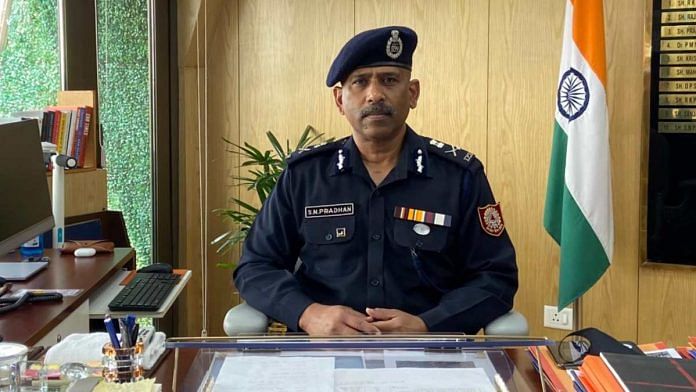New Delhi: Taking lessons from the flash floods in Uttarakhand’s Chamoli district, the National Disaster Response Force (NDRF) will now be training their teams in high-speed flood water rescue operations, on how to tackle snow avalanches, besides high-altitude tunnel rescue missions in mountainous regions.
The NDRF is also in the process of establishing three new battalions in the hilly regions of Uttarakhand, Himachal Pradesh and Jammu and Kashmir, and another in Delhi-NCR, NDRF chief S.N. Pradhan told ThePrint. There are around 1,150 personnel in one battalion of NDRF.
“We are in the process of establishing four new battalions over the 12 existing ones. Out of these, three will be stationed in hilly states where there are a lot of issues of avalanches and will require high-altitude rescue in future, and one in Delhi-NCR,” Pradhan added.
“I must confess that NDRF so far has not focused on high-altitude rescues, snow avalanches rescues with people trapped in snow, so much. It is now very important for us to upgrade our skills in that direction,” he added.
Sub-teams will be placed at all strategically located areas to minimise response time for such disasters, he said.
The death toll in the aftermath of the floods in Chamoli that took place on 7 February has gone up to 58 now, with two more bodies recovered Tuesday.
Also read: Existence of NDRF doesn’t bar creation of PM CARES for voluntary donations: Centre tells SC
Better skills, more technology
Pradhan said the Uttarakhand disaster has made it very clear that skills of doing rescue operations need to be fast-tracked, and that required resources must be made available.
He said in the current scenario when the NDRF teams were supposed to trek to the lake, which had formed on the Rishiganga river due to accumulation of debris, they could not do it as they did not have the required snow boots, and the teams are also not equipped to handle operations in snow-capped mountains.
“Our teams were supposed to trek to the lake but snow boots were not in place as we are still in the process of procuring winter clothing for these battalions,” he said.
“These are gaps that have been intensified and the importance of that has been made very clear in the course of this operation that we have to fast-track all these skills and also requirements to be fulfilled,” he said.
Pradhan also insisted that with a fragile ecosystem in the wake of climate change, especially in the mountains, the agencies have to be “well prepared”.
He said that not just the technology with the NDRF has to upgrade, but also technology that clears out mud and slush faster needs to be brought in.
The NDRF has also written to the Council of Scientific and Industrial Research in this regard, said Pradhan.
“Moreover in a disaster like this, a quick survey done from a satellite within the first few hours of the natural phenomenon, which takes pictures, will help a lot. All these need to be looked at with a fresh eye and perspective as these challenges will not slow down, they will only multiply,” he added.
‘This operation a template for disaster response’
The ongoing rescue operations by multiple agencies in Uttarakhand, Pradhan said, were a “template for disaster response for future”.
He said it was the first time that multiple technologies came together in one operation.
“On day one, with the help of satellite technology, (it) gave us a sense of what is happening on the ground. CSIR used helicopters with under hanging ground penetration radar technology, which told us what was happening inside the tunnel. We had a colour-coded picture and helped us plan operation better,” he said.
“Because of technology, we were all connected and had a grip on the situation,” he added.
Pradhan further said that to deal with disaster effectively, every agency should have a disaster management component.
“The NDRF can be a nodal point, but also Central Armed Police Forces, including the CRPF and others, Army and even states can build dedicated disaster response teams,” he added.
Also read: Finance ministry paves way for individual contributions to NDRF, 15 years after Act was passed



